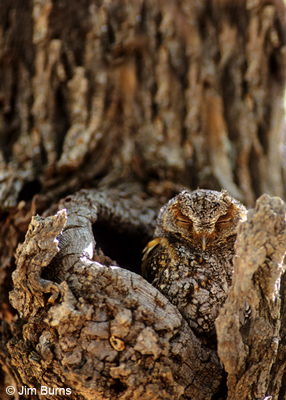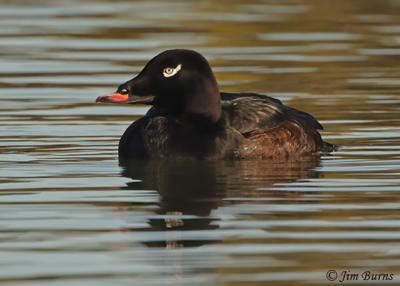
My friend, Debi, an avid nature lover but not a birder per se, recently asked me to list my ten favorite birds, and she wanted to know the reason for my picks. Her request got me to scrolling through my old notes, hotspot folders, and image files. Nostalgia can be bittersweet, but it’s good for the soul and seems unavoidable at this time of year.
I told Debi her request was akin to asking a parent to name their favorite child, but I decided to do it and put my own spin on it. I’m picking my ten favorite families of birds, then choosing a favorite within each of those families. It is well documented I’ve always been partial to birds with special evolutionary adaptations which allow them to survive and thrive in unique niches of nature, so those will be my starting point and esthetics will fill out the rest of my personal list.
There are myriad reasons for a birder’s love for certain species. The pure esthetics of plumage or song, the species’ rarity, and the memories evoked by the travel or friendship involved in first sightings seem principal among those reasons. If you happen to work up your own list, be sure you define your “beauty.” Some birds just spark our attention more than others. Herewith, then, are my ten families, most favored first, my “best bird” in each family, and the reasons behind my preferences.
OWLS are my favorite family of birds. Period. Full stop. Always have been, always will be. When we envision different species we inadvertently picture them in habitat. Is “night” a habitat!? It is for most of our owls. Darkness and mystery are their world. Though not rare, they are hard to find, then hard to see well, and those eyes and ears and that cryptic plumage have made them evolutionarily perfect for their world of darkness. Always a surprise, there is nothing in nature quite like stumbling upon an owl.
The best of the nineteen in North America, for me, are the tiny FLAMMULATEDS. Though they are said to be the most numerous summertime raptor in our Western forests, good luck finding one. Dark eyes and reddish tints in their plumage encrypt them amidst the interstices of Ponderosa bark, and their soft calls are ventriloquial. The image accompanying this column is one of my top ten bird portraits, taken as we fervently prayed whatever was splashing down the creek toward us was not a bear.
My second family, DAYTIME RAPTORS, are probably near the top of many birders lists just as surely as they are at the apex of the avian food chain. Like many birders I am in awe of the predatory traits that place them there, the size, the acuity of their eyesight, the speed of flight, the sharpness of talons. This evolutionary package of attributes gives our eagles, hawks, falcons, and kites an aura of power and invincibility, a regality totally unlike that of any other family of birds.
That said, my favorite is our COMMON BLACK HAWK, precisely the one that defies our stereotype of “hawk” because it is unique within its family in so many ways. This is a raptor that doesn’t much soar in the clouds or scream with defiance. It mostly still hunts from a perch below the canopy, splashes along creek beds, and whistles in a squeaky staccato. The beautiful black plumage offset by the broad wings and wide white tail band make this eye catching predator of our Southwestern riparian corridors a rare visual treat.
Next in my hierarchy is the GROUSE family, somewhat like the owls because they are mostly uncommon, quiet and retiring and, though not nightbirds, wear neutral colors in cryptic patterns which make them hard to spot. Unique courtship displays include the males’ colorful air sacs, dramatic tail spreads, and the use of leks by some species. Looking for grouse can be almost as difficult as looking for owls, and birders typically just see them just by chance.
RUFFED GROUSE is my favorite member of this family for an odd but understandable reason. Though I have seen them several times while hiking in the northern Rockies, as long time readers of this column will remember, this is my nemesis photo bird. I have no images of this bird. The distribution maps show them all over West Virginia, so I’m hoping Debi will pick up on this. Preferably of course I want the photo cliché of a male drumming on a log.
It should be no surprise to find the WOODPECKER family near the top of my favorites list, given the many and varied physical adaptations they have evolved to live in an arboreal niche. These include stiff tail feathers and zygodactyl feet (two toes forward, two backward) to enable tree climbing, long, straight bills for drilling and exploring tree bark, long, barbed, and sticky tongues, and folded facial bones and enlarged brain cases to absorb the shock of hammering into wood.
Though these characteristics rank the family second only to owls in evolutionary variation, I’m going with esthetics in choosing my favorite woodpecker, the stunningly beautiful WILLIAMSON’S SAPSUCKER male. Most of this family has rather plain plumage save for splashes of color on the head, but the male Williamson’s rocks its four colors in spectacular fashion, a mostly black body with bright red chin and throat, a yellow belly, and contrasting white head stripes and wing patches. Just “Wow!” for this woody of our Western mountain aspen groves.
My next family may be your first real surprise on the list. The SPARROWS were the first birds I set out to photograph extensively because some of my identifications of this cryptic, look alike group were challenged, and I began carrying the camera to capture diagnostic proof of what I was seeing. This in turn led me to hone my photographic skills and contribute images to Jim Rising’s two sparrow guide books.
By now you’ll guess my favorite sparrow is one that belies the rather drab, neutral plumage of the majority of the family. Esthetics and “sparrow” used in the same sentence? Indeed! A white central crown stripe becoming orange on the forehead, a bright, orange-buff eyebrow against a gray cheek and ear patch, chestnut streaks on the nape, and orange-buff breast and flank color render LE CONTE’S SPARROW a beautiful bird, the equal of any of our warblers and tanagers.
Speaking of the WARBLERS, I will now acknowledge the beautiful palette of colors found on most of these tiny packages, surely the favorites of many birders, especially in our Eastern deciduous forests. Called by some the “butterflies of the avian world” because of their bright plumage and fluttery, peripatetic feeding behavior, the warbler family name is certainly a misnomer as none has a song that attracts attention like their eye candy feathers.
Picking a favorite from this large, diverse family is not easy, but I’m going with CERULEAN because blue is not a common color in the birding world, Cerulean Warblers are uncommon (and declining), and this stunning little bird can be found throughout West Virginia. A male Cerulean could be the spark bird that turns my friend into a birder. I hope she goes out looking for one this spring.
The tiny size, aerial maneuverability, and confiding tameness of the HUMMINGBIRD family would be enough to place them somewhere on every birder’s top ten list, but the stunning, gem-like colors and iridescence of the males’ gorgets put them at the top for many of us. What the mountain West lacks in warbler diversity compared to the East is more than compensated by our plethora of these winged jewels, fifteen to only the East’s Ruby-throated
My favorite here is the relatively uncommon LUCIFER with its long, thin, and strongly decurved bill and the male’s spectacular full magenta gorget which can flash from red to royal purple as the sun angle changes. One unforgettable day during a September monsoon we tallied ten hummer species in the Huachuca foothills and, despite one of them being a vagrant Plain-capped Starthroat, the male Lucifer was the real star.
The THRUSHES? Well, American Robins were my childhood yard birds, and now here in the Southwest every winter brings us the possibility of a spectacular vagrant, perhaps a Rufous-backed Robin from the south or a Varied Thrush from the north. Don’t forget, though, our three species of the beloved bluebirds are card carrying members of this family too.
Despite the inexplicable daily presence of a Rufous-backed Robin in our yard for six weeks during the winter of 2021, my favorite thrush is MOUNTAIN BLUEBIRD. When seen in the breeding habitat for which it is named, this species’ ethereal blue flying against the dark background of the White Mountain’s pine forests is a breathtaking sight we look forward to every year as we escape the dog days of the Valley’s summer heat.
I’ve included the WREN family on my list for two reasons. The first is that even though they are not uncommon, most are nearly impossible to see well, and this family gets my vote as the most difficult of all our birds to photograph well. “Busy” and “furtive” define this family’s behavior and do not make for good camera subjects. The second reason is that most of our wrens have wonderful song repertoires and are truly a delight to hear.
Song is the reason for my favorite here being the CANYON WREN. Many birds’ common names arise from onomatopoeia, but to me our Canyon Wren’s dazzling song has always defined the word “onomatopoeia.” Once you’ve experienced the rich, melodious song as it echoes down the musical scale from the rocky cliffs above a deep canyon, you will never forget it. It will change your soul.
DUCKS, The last of my top ten families may be your second surprise on this list. Ducks are a large family, both common and accessible, so many birders take them for granted and don’t even raise their bins for them. But aren’t those all the reasons why so many of us first got interested in birds back at the beginning. I wouldn’t call any of them my spark bird, but I guarantee ducks were my and many a photographer’s first avian subjects.
My final surprise is that although there are many colorful ducks, my favorite member of the family is the male WHITE-WINGED SCOTER. Visually I’m always into contrast, and I love the stark white on black plumage offset by the bright orange bill. You can read all about this at the following link:
It is my hope that this column may send you to your own files to fashion your own list of memories. ‘Tis the season. Enjoy.